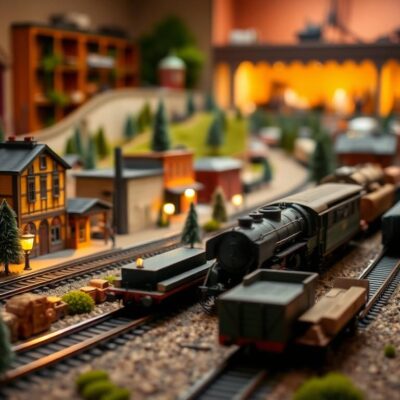
Understanding HO Scale Dimensions
Understanding HO Scale Dimensions: A Comprehensive Guide for Newbie Modellers
Welcome aboard the exciting world of model railroading! For many, it’s the magic of reliving childhood fantasies or building meticulously detailed miniature worlds that draws them in. One of the first hurdles newcomers often encounter is navigating the various scales available, but fear not! Today, we’ll be focusing specifically on HO scale dimensions, unraveling their mysteries and helping you understand why HO scale is a favorite amongst modellers worldwide.
What Makes HO Scale So Popular?
Before we dive deep into specifics, let’s talk about why HO scale reigns supreme for so many.
- Balance: It strikes the perfect balance between realism and manageability. Larger scales offer greater detail but require significantly more space (think of sprawling G-scale railways in backyards). Smaller scales can feel too cramped and difficult to work with. HO scale beautifully bridges this gap.
- Versatility: From grand freight yards to charming villages, the HO scale lends itself to a diverse range of scenarios and model railroading themes.
- Community: The vast and vibrant community around HO scale means you’ll find countless resources, support networks, and inspiring creations to fuel your journey.
Defining HO Scale Dimensions: It’s All About Ratio
Remember, model scales are essentially ratios comparing the miniature model size to the real thing.
In HO scale, the ratio is 1:87. This means that every inch (25.4 millimeters) on your layout represents approximately 87 inches (almost seven feet!) in the real world. So, a standard American Class locomotive would be about 9 inches long in HO scale!
Measuring Key Components: Understanding HO Scale Standards
While the fundamental ratio remains constant, there are standardized dimensions for various aspects of an HO scale model railroad:
- Track: This is perhaps the most critical dimension.
- Popular HO track systems utilize codes like HO Standard or Piko Flex, adhering to specific gauge measurements. The common gauge in North America is approximately 16.5 mm (0.65 inches). Remember, this determines how wide your rails are!
- Locomotives: The length and width of HO locomotives vary significantly depending on the type of train being modeled.
- Freight engines might stretch to 9-12 inches, while compact switching locomotives could be closer to 5-6 inches.
- Rolling Stock: This category includes freight cars, passenger cars, cabooses, etc. They vary in size based on their real-life counterparts.
- Track-side Buildings:
- These miniature buildings offer immense customization and scale realism. Remember, their dimensions should complement your overall layout design and maintain the 1:87 ratio.
Model Train Scale Comparison: A Quick Glance
Let’s briefly compare HO scale to some other popular scales:
- Z Scale (1:220): The smallest common scale, requiring even greater dexterity and a truly compact footprint.
- N Scale (1:160): Smaller than HO but larger than Z, offering good balance between realism and practicality.
- O Scale (1:48): Larger-scale models with excellent detail, often used for layouts featuring classic American locomotives.
Resources & Tools for Masterful Modelling in HO Scale
As you embark on your HO scale modelling journey, these tools will be invaluable:
- Gauges and Measuring Rulers:
Essential for ensuring accurate track laying and maintaining the 1:87 ratio throughout your layout. - Track Plan Templates and Software:
Use online templates or dedicated software to design your perfect layout. This can help visualize your project before you build it! - Online HO Scale Communities and Forums:
Engage with other passionate modellers, share projects, and learn from experienced builders. There’s a wealth of knowledge within these communities!
Building Your Dream Layout: A Journey Guided by Dimensions
Remember, while mastering HO scale dimensions is crucial, it’s just the starting point! Model railroading is all about creative expression and bringing your vision to life. Don’t be afraid to experiment, learn from mistakes, and most importantly, have fun on this incredibly rewarding journey.
So, what are you waiting for? Dive into the world of HO scale model trains and let the possibilities unfold!









